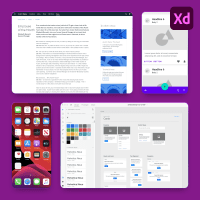
Adopting a Lean Operating Model for Complex Product Builds
The tech industry is experiencing unprecedented layoffs globally. Cost-cutting has become paramount, and AI adoption is moving at lightning speed.
So what is happening? For starters, we are still experiencing a recalibration from Covid. During peak COVID years, we saw a sudden significant rise in salaries in the tech sector, driven by supply and demand issues. We are seeing companies attempting to rebalance and cut staff to reduce costs along with the rapid technological change sweeping the globe.
AI adoption is EVERYWHERE. Companies are adapting rapidly and embracing the new technologies. Companies are laying off staff to invest in AI while succumbing to share price pressure. Investor and market pressure to boost share price is driving the adoption aggressively.
So, how do you get the same product outcomes with fewer resources in this rapidly evolving environment? A lean generalist team, as opposed to larger siloed teams with a host of specialists, is exceedingly more effective in any scenario.
What is the negative impact of using specialists? When discussing the core principles of a lean operating model, it’s worth highlighting the relevance of the Pareto Principle, or the 80/20 rule. This principle suggests that 80% of effects come from 20% of causes. Applied to business operations, a significant portion of productivity and outcomes can be attributed to a relatively small fraction of efforts. This is a great guiding principle for lean operating models, prioritizing streamlining processes and eliminating inefficiencies that can arise due to large teams, inefficient communication practices, and a sluggish process.
Consider the two-pizza model, a concept introduced by Jeff Bezos. The idea is that two pizzas should be enough to feed a single team. While this may seem extreme depending on the project’s scope, the underlying principle is sound. Companies can leverage the lean operating model to maximize value and minimize waste by focusing on condensed lead roles. This strategic approach is crucial for staying competitive and responsive in the rapidly evolving tech landscape.
For instance, the role of a Product Manager is multifaceted, blending elements of product management, business analysis, and scrum master duties to ensure that a team’s objectives are met from inception to completion. This role often serves as the exclusive role of information, thereby eradicating any chances of miscommunication among team members. Full-Stack Engineers handle the responsibilities of front-end and back-end development, overseeing all facets of development and user interface with the primary aim of reducing handoffs and expediting the development process. Similarly, a Lead Product Designer with expertise in AI might integrate the functions of UI (User Interface) and UX (User Experience) design, taking charge of the comprehensive user experience to guarantee that the product is not only aesthetically pleasing and functional but also aligns with the overarching project objectives.
When these roles are condensed, there is reduced communication overhead with delegation and coordination, faster decision-making, and reduced costs. The lean operating model aims to save as much time as possible when turning ideas into innovative products. Creating a high-level architecture allows deliverables to be broken down amongst individuals and encourages consistent workflow and communication, avoiding waiting periods for context for specialists who can only begin their role once a task is completed.
We believe that becoming laser focused on adopting high quality generalist teams who can also adapt current technologies is the best path forward for creating exceptional products efficiently and economically.
If you are receiving this note, you are on Impekable’s favorite list. Feel free to reach out to us if you’d like to catch up on this topic.

Pek Pongpaet
Helping enterprises and startups achieve their goals through product strategy, world-class user experience design, software engineering and app development.
|
-

“Impekable delivered multiple, fantastic options for us… they genuinely cared about the project and our goals.”
Co-founder, JSwipe, acquired by Tinder
Our Case Studies





